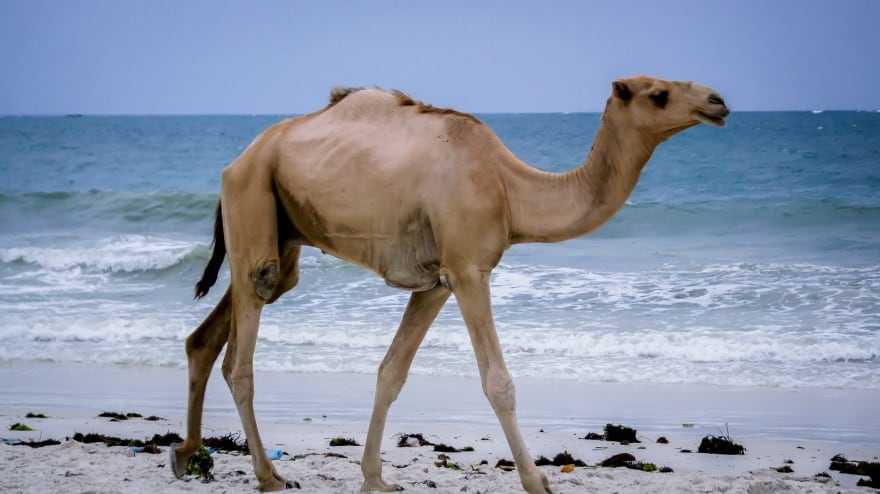While you may think of camels as simply desert animals, these humped mammals can also be found on farms across the United States. Camels can serve as a source of milk, be ridden for fun, or serve as pack animals. When raised with plenty of human interaction, they can be quite personable and make lovely, if unusual, pets.
If you’re considering adding a camel to your homestead or farm, check the state and local regulations to make sure they are legal to own in your area and if you need a permit. Then check out our handy guide to find out how much it costs to own a camel, including one-time and recurring expenses. You’ll also find some tips for owning a camel on a budget. You can expect to pay $100 – $450 when adopting a camel or $5,000 – $25,000 when buying one from a reputable breeder.
Click to Skip Ahead:
- One-Time Costs
- Care Supplies and Costs
- Monthly Costs
- Additional Costs to Factor In
- Owning a Camel On a Budget

Bringing Home a New Camel: One-Time Costs
As with many pets, the most significant chunk of expenses tends to occur when you first bring them home. With camels, the cost of the animal itself will be the highest expense. Before bringing home a camel, you’ll need somewhere to keep them, including shelter and 0.5–2 acres of land per animal to roam.
Free
Truthfully, you’re highly unlikely to find a camel for free. Camel dairies sometimes reduce their stock, but they typically still charge at least a small fee for them. Other small farm or homesteading neighbors may be willing to give you a camel if they have one in need of a new home. Nothing is impossible, but don’t count on this route to save money.
Adoption
- $100 – $450
Internationally, several organizations are devoted to rescuing camels, primarily in the Middle East and Australia. In the United States, it’s unlikely you’ll find a camel for adoption because they aren’t as common here. Again, dairy farms or camel ride organizations could be looking to sell camels for a reduced fee. Livestock sanctuaries are another place to look.
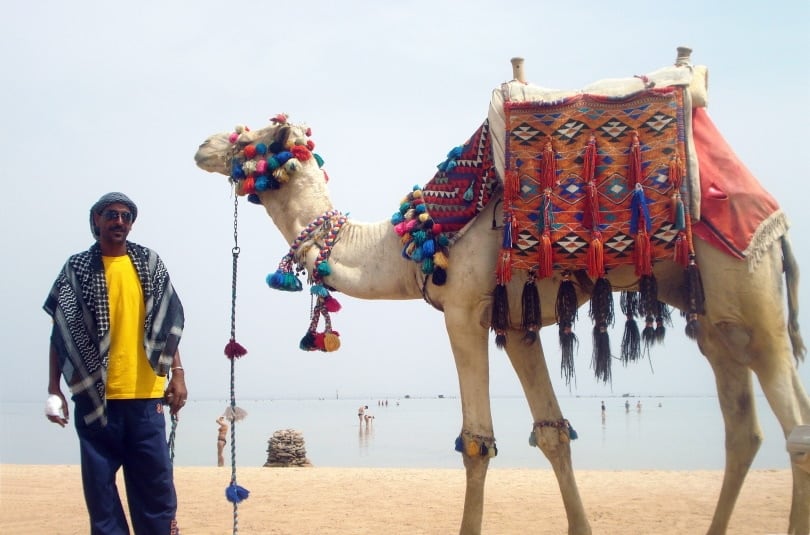
Breeder
- $5,000 – $25,000
You’ll likely find a lot of variation in the price of a camel from a breeder. The sex and color of the animal will impact their price, as well as whether they’re already trained. Your location will also play a role, as camel breeders may charge more if they know they’re the only option in your area.
Another point to keep in mind is that camels are herd animals. You don’t necessarily need to buy more than one, but they will be happiest if they have some other animal to live with, such as cattle or alpacas.
Initial Setup and Supplies
- $872 – $44,672
If you already live on a farm or acreage with a barn, you’re ideally set up to bring a camel home. If that’s not the case, then your priority is finding somewhere for your camel to live. Other possible costs include food and any working accessories the animal needs, such as a saddle or halter.
List of Camel Care Supplies and Costs
| Halter | $22 |
| Vet Exam | $150 |
| Camel Saddle (optional) | $500 |
| Shots | $60 |
| Alfalfa Pellets | $20/bag |
| Hay | $15/bale |
| Barn | $6,560 – $32,800 |
| Pasture | $26/month |
| Fence | $5,000 – $11,000 |
| Salt Lick | $30 |
| Training | $75/hour |

How Much Does a Camel Cost Per Month?
- $108 – $855 per month
After the initial cost of buying the camel and providing it with land and shelter, the animals are relatively low maintenance. The major monthly cost will be food, with some annual to semi-annual veterinary expenses. If you must rent pastureland, that will also be an additional monthly fee. Nutritional supplements are another recurring expense.
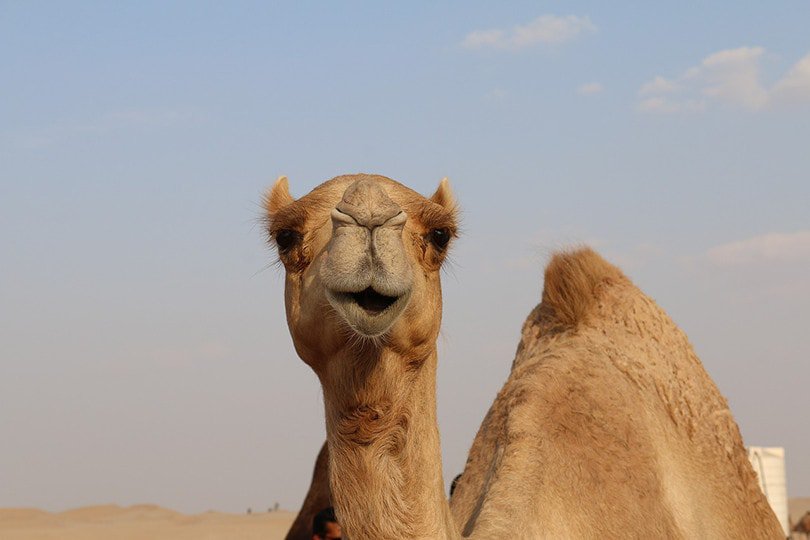
Health Care
- $108 – $725 per month
Food
- $55 – $125 per month
Camels should eat primarily hay, supplemented with pellets fortified with essential minerals like selenium. While camels will graze if they are out at pasture, hay should make up the majority of their diet. The cost of hay varies by what type of grass it comes from, along with other factors, including the time of year.
Grooming
- $8 – $100 per month
Like many other types of livestock, camels need regular hoof trimming to keep their feet in shape. Depending on how quickly their hoofs grow out, this could be a monthly or every few months type of cost. Farriers or veterinarians can usually perform this task. If a veterinarian does it, you may need to pay for a farm call in addition to the actual hoof trim.
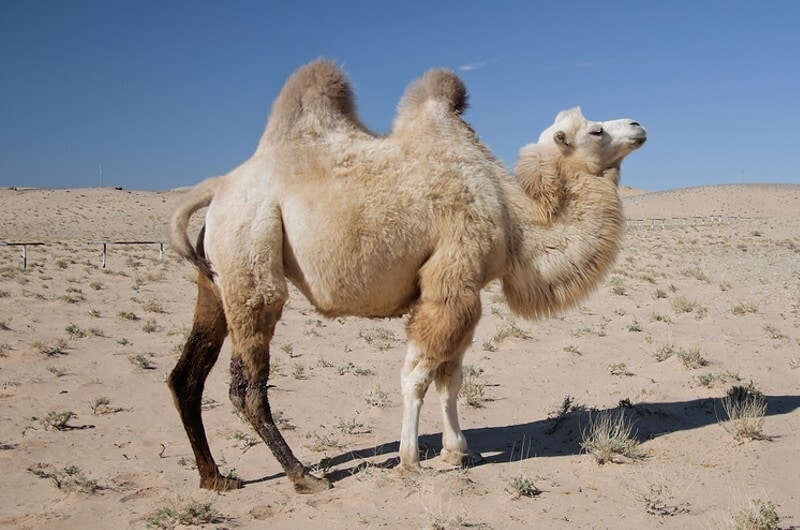
Medications and Vet Visits
- $45 – $500 per month
Camels generally only need vet care once or possibly twice yearly as long as they’re healthy. A check-up, vaccine boosters, and teeth floating can usually be performed annually. Your camel may need deworming twice per year. If you travel with your camel, they may need regular blood tests for certain diseases.
Environment Maintenance
- $0 – $130 per month
Because camels live in a pasture, there won’t be much in the way of monthly costs to maintain their environment. They should have constant access to a salt lick, which should be replaced as needed. You’ll also need to provide bedding in their shelter; it will need to be replaced regularly as it becomes soiled.
| Salt lick | $20/month |
| Sand | $90/month |
Entertainment
- $0 – $20 per month
Camels don’t need specialized enrichment. Daily human interactions are a must, but those are typically free. Camels also benefit from performing natural behaviors like browsing and occasionally eating interesting new food. If the camel’s enclosure lacks a natural landscape for foraging, branches with leaves can be placed throughout.
Total Monthly Cost of Owning a Camel
- $108 – $855 per month
Besides the months when you have vet bills, the average total monthly cost of owning a camel is quite reasonable. Again, these animals are usually simple to keep if you already have space on your farm. Feed and water them, provide salt to lick and branches for munching, and they should be happy.

Additional Costs to Factor In
Because camels are desert wanderers by heart, they can be tough on the fences trying to keep them contained. Factor in regular fence repair costs as part of your budget. If your camel gets sick or injured, veterinary costs could also temporarily go up.
If you want to go out of town, you’ll need someone comfortable caring for livestock to look after your camel. You’ll also need to provide your camel with other animals to serve as their herd if you don’t already have any. They can bond with dogs and graze with livestock such as cattle.
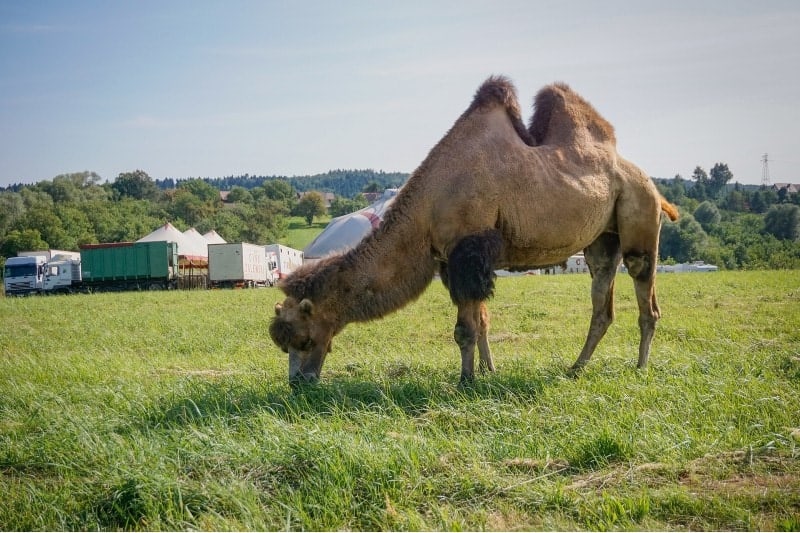
Owning a Camel On a Budget
Livestock isn’t always something you think is possible to own on a budget. However, as we’ve learned, a camel’s needs are simple, outside of proper food, space, and shelter. The most significant expense outside of that is buying the camel.
Male camels usually cost less but also need to be purchased young enough to allow them to be trained, or they can be dangerous to live with. Research camel dairies near you and whether they have animals available for sale or rescue. If you don’t plan to ride your camel, you can skip buying the saddle and likely save time and money on training expenses.
Saving Money on Camel Care
If you already live on a farm or homestead, you’ll save the most money on camel care because you usually won’t need to pay for pasture rental, fencing, or sometimes even a shelter. The camels will also be happiest in this situation because they have room to roam. Those who own their fields can also save money on food costs.
You can train your camel personally instead of paying someone, but only if you feel confident enough to do it safely.

Final Thoughts
The one-time costs to acquire a camel can be pretty high, mainly because the animals are rare in the U.S. First-time homesteaders or farmers may also be looking at steep prices to upgrade fencing and build a suitable shelter. The trade-off is that ongoing expenses are usually more reasonable.
Feeding a camel costs similar to feeding a horse, and their other care needs are minimal. Unlike other pets, camels also have the potential to generate income through milk production or giving rides, among other things.
Like any large animal, owning a camel comes with a certain amount of risk due to size. Make sure you’re prepared to train your camel before you buy. Well-trained, respectfully treated camels can be social, friendly, and a joy to interact with. Keep in mind that they can live 30–50 years, so owning one is a definite lifetime commitment.
Featured Image Credit: Piqsels
